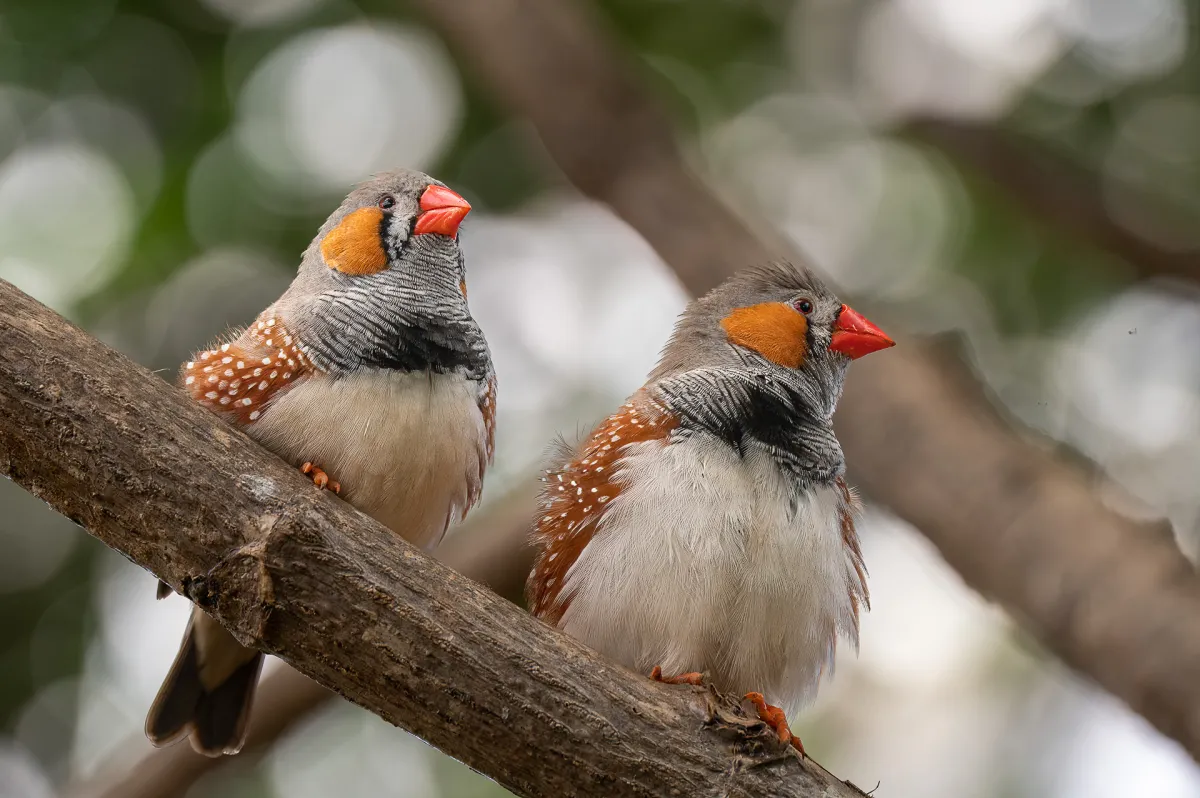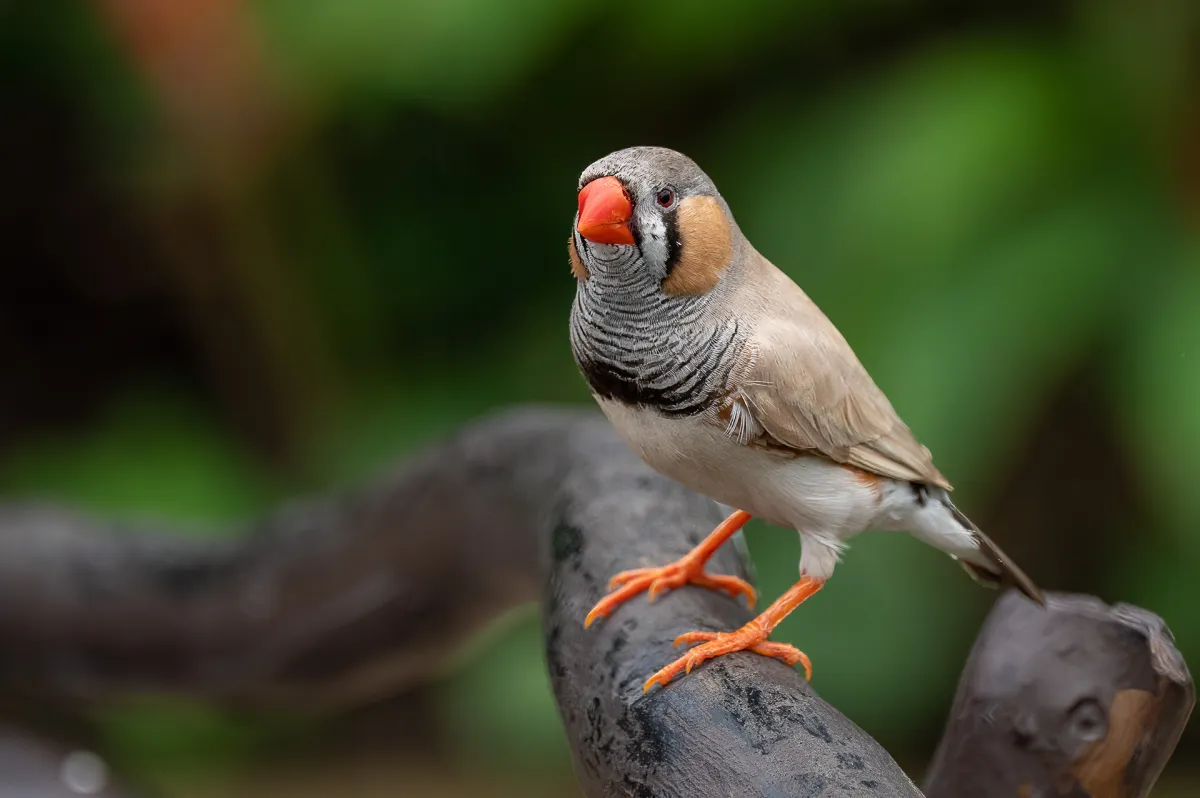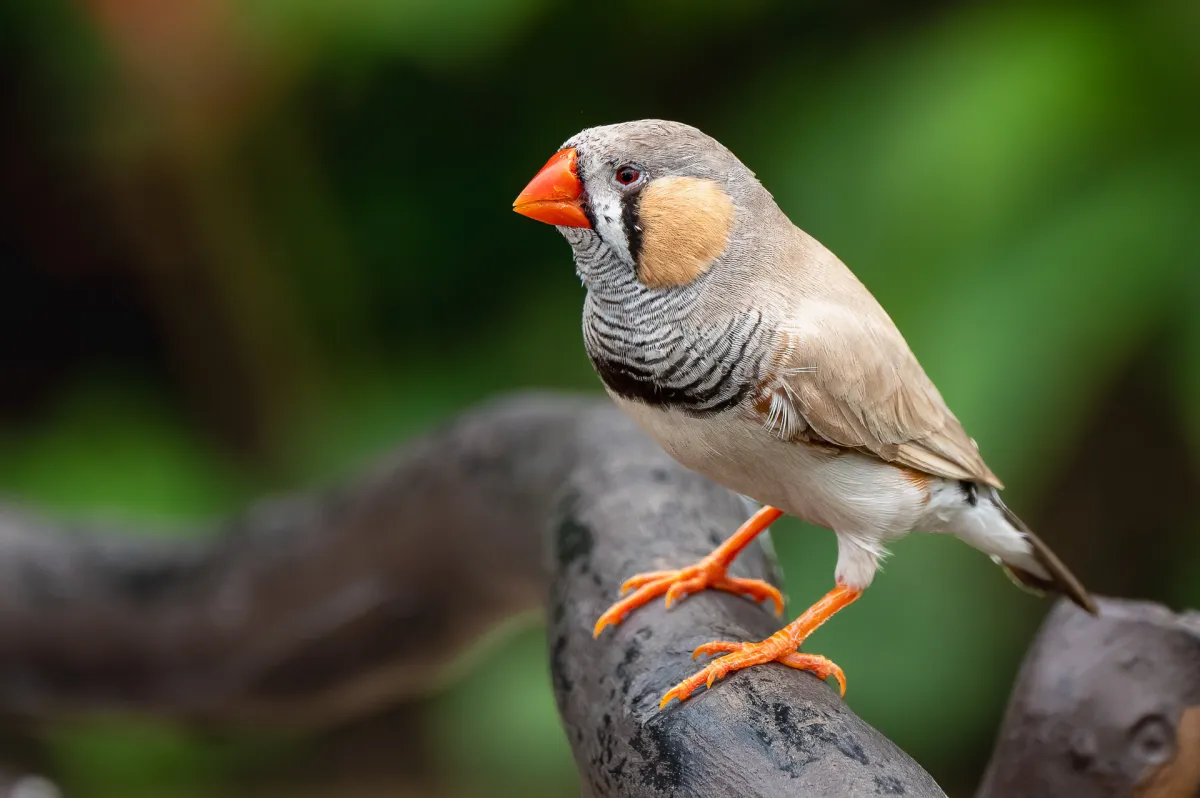The Australian Zebra Finch or Chestnut-eared Finch, Taeniopygia castanotis, is a small, lively bird native to the grasslands of Australia. In the wild they tend to live for around 5 years, but in captivity (it is a popular bird, kept as a pet or for breeding) they can live anywhere up to 12 years or even more on occasion. These birds were flying freely in the Mariposario de Benalmádena – Butterfly Park.

Physical Description
Zebra Finches are approximately 10-12 cm in length and weigh between 9-15 grams. Males have distinctive black and white stripes on their throat, chest, and forehead, with a bright orange beak and red eyes. Females are less striking, with grey and brown stripes and a lighter-colored beak.
Habitat and Range
Zebra Finches are found throughout most of Australia, with the exception of the coastal and highland areas. They are typically found in arid and semi-arid grasslands and savannas, where they feed on seeds and small insects.

Diet and Behaviour
In the wild, Zebra Finches feed primarily on seeds, but will also eat insects, particularly during the breeding season when they need extra protein. In captivity, they can be fed a diet of commercial finch seed mixes, along with fresh fruits and vegetables.
Zebra Finches are social birds and thrive in groups. They are relatively easy to care for and can make great pets for bird enthusiasts. They are known for their cheerful chirping and playful personalities.
Breeding and Reproduction
Zebra Finches are prolific breeders and can breed throughout the year. The breeding process is fascinating to observe, with the male courting the female by singing and performing a courtship dance. The female will then lay a clutch of 4-6 eggs, which she will incubate for around 12-14 days. Once the eggs hatch, both parents will care for and feed the chicks.

Conservation Status
The Zebra Finch is not considered a threatened species and has a stable population throughout its range. However, in some areas, it is affected by habitat loss and degradation due to agriculture and urbanization.